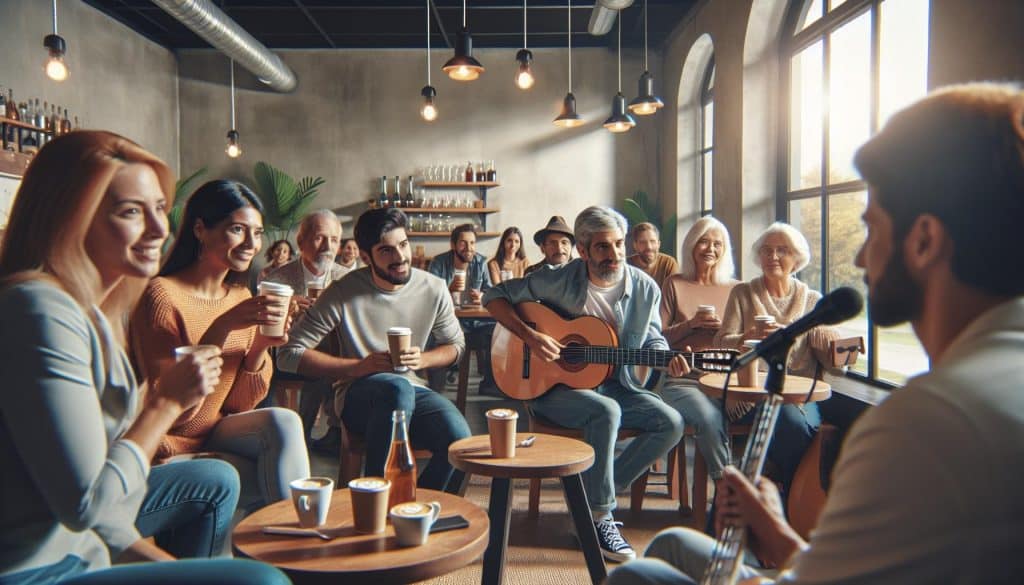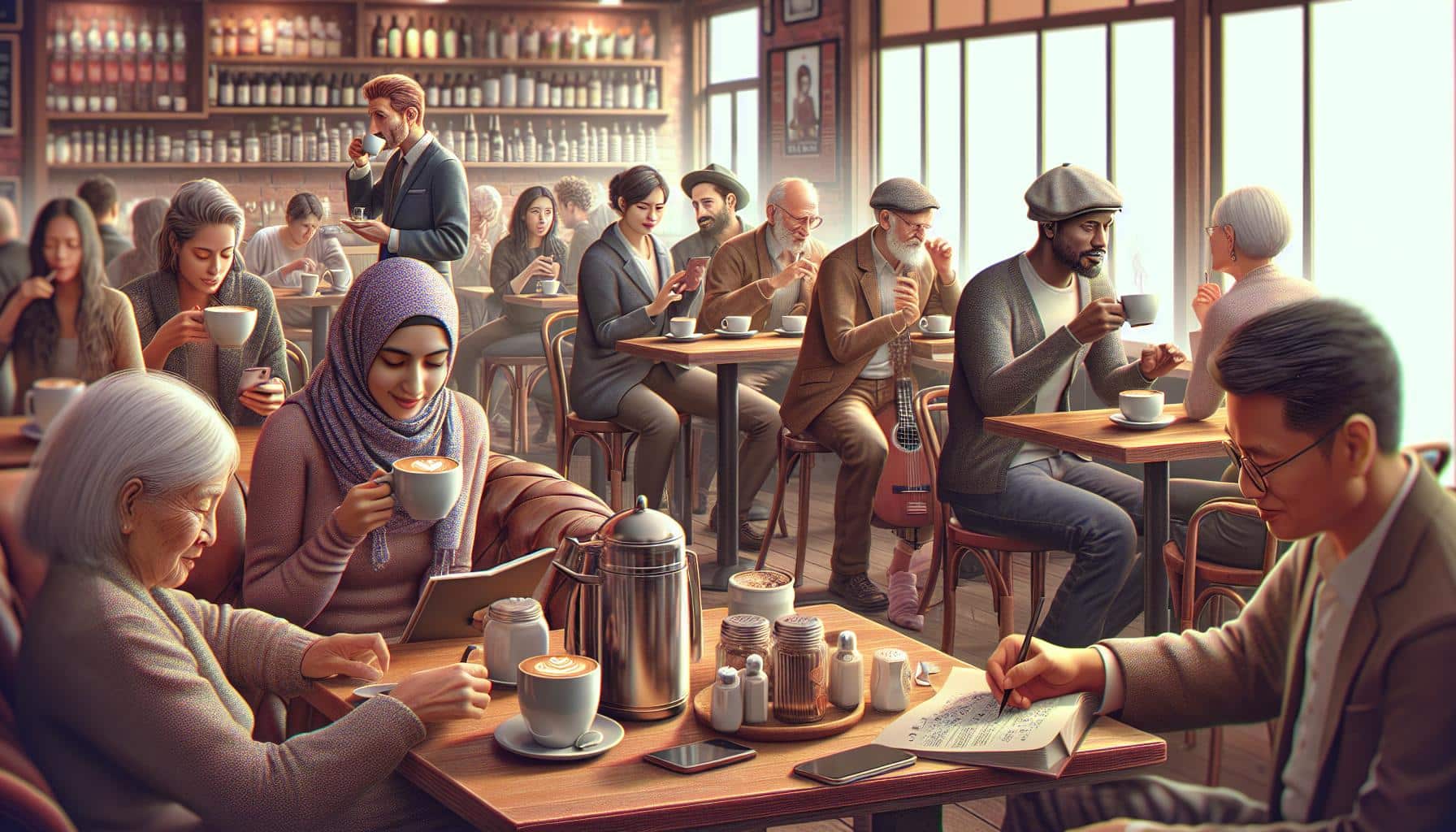Wondering if your coffee shop should double as the next hotspot for live tunes? You’re not alone. The idea of sipping on a latte while a local artist strums away in the background sounds like a scene straight out of a cozy indie movie. But before you start auditioning musicians, let’s dive into why this could be your best idea yet—or a latte trouble.
Live music in coffee shops isn’t just about creating an ambiance; it’s about brewing a unique experience for your customers. It’s the difference between a forgettable coffee run and a memorable outing. So, grab your favorite mug, and let’s explore the perks and quirks of adding live music to your menu.
The Pros and Cons of Hosting Live Music in Your Coffee Shop
When contemplating whether to introduce live music to your coffee shop, weighing the advantages and drawbacks is essential. Here’s a breakdown to help you make an informed decision.
Pros
- Enhanced Atmosphere: Live music can transform your coffee shop into a vibrant hangout, far beyond just a place to grab coffee. It creates an inviting atmosphere, encouraging customers to stay longer and enjoy their visit.
- Increased Traffic: Music events can draw in crowds, including those who might not visit otherwise. This boost in foot traffic can significantly increase sales, especially during typically slow evenings or weekends.
- Community Engagement: Hosting local artists can strengthen community ties and position your shop as a cultural hub. It’s an excellent way to give back and show support for local talent.
- Licensing and Legalities: As per the Copyright, Designs and Patents Act 1988, playing music publicly, including live performances, requires a license. The process and fees involved can be complex and sometimes costly for small businesses.
- Noise Concerns: While music adds ambiance, volume levels can deter conversations and alienate customers seeking a quiet spot. Balancing sound levels to accommodate everyone’s needs might be challenging.
- Operational Logistics: Organizing live music involves additional work, including scheduling, equipment setup, and potential space rearrangements. It can also lead to increased operational costs, such as hiring additional staff or equipment rental.
Navigating the decision to feature live music involves careful consideration of these factors. Each coffee shop is unique, so what works for one might not be suitable for another. Consider your customer base, space, and budget when making this choice.
The Benefits of Live Music in Restaurants

When you’re running a coffee shop, the ambiance is everything. Live music can play a pivotal role in creating a unique atmosphere that sets your cafe apart from the competition. It’s not just about having any music; it’s about crafting an experience that resonates with your customers, making them feel at home, and compelling them to return.
Your playlist might be great, but live music adds a dynamic element that recorded tracks can’t match. Imagine a local musician strumming a guitar in the corner, filling the room with soft melodies that enhance the aroma of coffee in the air. It’s authentic, and it’s engaging. This authenticity helps in cultivating a community vibe, where patrons feel part of something special.
Furthermore, live music acts as a magnet for customers. People love unique experiences and discovering new talent. Hosting live music nights can draw in crowds, from regulars who come for their favorite latte to newcomers attracted by the buzz of a live performance. It’s an excellent way to increase foot traffic on slower days or evenings.
Besides attracting more customers, live music can also increase the average time customers spend in your coffee shop. When they’re entertained, they’re likely to order another drink or try out a pastry they wouldn’t have considered otherwise. Longer stays usually translate into higher sales, making live music not just an aesthetic choice but a savvy business strategy.
But it’s not all about the direct benefits to your business. Hosting live music can bolster your coffee shop’s reputation as a cultural hub in your community. Supporting local artists and providing a stage for them to perform not only enriches the cultural fabric of the area but also strengthens your relationship with the local community. It positions your coffee shop as a place that values and contributes to the local arts scene, which can be a powerful differentiation point in today’s competitive market.
Remember, the key to reaping these benefits is to curate the music well. It should complement, not overpower, the coffee shop experience. Whether it’s jazz, acoustic, indie, or classical, the right genre can significantly enhance your customers’ enjoyment and satisfaction.
Potential Drawbacks and Considerations

Introducing live music into your coffee shop isn’t a one-size-fits-all decision. While there are undeniable benefits, it’s also essential to weigh the potential drawbacks and practical considerations. First and foremost, there’s the matter of copyright infringement, a legal hurdle you can’t afford to overlook. If you’re planning to play recorded music or host live performances, you need to be aware of the copyright laws that govern public performances. For most businesses, this means obtaining the necessary licenses, which come with their own costs.
| Legal Consideration | Impact |
|---|---|
| Copyright Infringement Penalties | $750 – $30,000 per work |
| Willful Infringement Penalties | Significantly higher |
Remember, playing music without the proper licenses can result in hefty fines that could severely impact your financial health. It’s not just about the fines, though. Being caught in a legal battle can tarnish your reputation, making it harder to attract both artists and customers in the future.
Another aspect to consider is the logistics of integrating live music into your space. Do you have enough room to accommodate performers without sacrificing customer comfort? Is your equipment up to the task, or will you need to invest in a sound system? Also, think about your neighbors. Will live music disrupt their business or residential peace? Understanding and mitigating these concerns are key steps to ensure a harmonious relationship with your community and a successful live music venture.
Finally, consider the demographic you’re targeting. Live music can be a magnet for customers, but it’s vital to align your music selection with your audience’s preferences. A mismatch here could result in driving customers away rather than attracting them. Always aim for a balance that enhances the ambiance without overpowering the primary reason people come to your coffee shop – to enjoy a cup of coffee in a setting that feels right for them.
Do You Have the Space and Equipment for Live Music?

When you’re considering jazzing up your coffee shop with live music, there are a couple of key factors you need to think about. First up, let’s talk about space. Live music isn’t just about the musicians; it’s about the entire setup, which includes instruments, microphones, and possibly even a small stage. You don’t want your patrons squeezing past the drummer every time they need to get to the restroom. So, have a critical look at your floor plan. Is there enough room to host a band without compromising the comfort of your customers?
You can opt for just a guitar player, or just a piano or keyboard player, unless you have enough space for a small band.
Next, consider the acoustics, equipment, and lighting in your venue. Good acoustics aren’t just a fancy word for musicians; they’re essential for ensuring that the music envelops the room without overwhelming conversation. If your coffee shop has the acoustics of a tiled bathroom, it might be challenging to achieve the cozy ambiance you’re aiming for. As for equipment and lighting, it’s not just about having a sound system and some spotlights. You need the right kind of equipment that complements live performances, including microphones, speakers that can handle live music, and lighting that sets the right mood.
It’s also worth noting that not all customers appreciate the addition of live music. Some people come to coffee shops for the quiet atmosphere, where they can read a book or work on their laptops undisturbed. Understanding your clientele is key here. Do a little market research; ask your regulars what they think about the idea. Their feedback could be invaluable in making your decision.
You’ll also want to try out the musician to make sure they can actually play it instead of ending up with someone just learning the piano or guitar.
Addressing these aspects upfront can save you a lot of headaches down the line. Ensuring you have the right space, equipment, and customer base will set the stage for a successful integration of live music into your coffee shop’s atmosphere, making it a win-win for both you and your patrons.
Why Coffee House Music Playlist Matters
When you’re running a coffee shop, every detail counts, and your music playlist is no different. Think about it: music sets the atmosphere. It has the power to create an inviting environment that makes your customers feel at home. A well-curated playlist can be the subtle difference that makes your coffee shop the go-to spot for relaxation and good vibes. But why exactly does it matter so much? Let’s dive in.
First off, music influences mood. It’s science. Studies have shown that the right background music can enhance a person’s enjoyment of their environment. Play something too loud or too fast, and you might unsettle your customers. On the flip side, tunes that are too soft or slow may put them to sleep. Finding that perfect middle ground is key. You want your customers to associate your coffee shop with positive feelings, effectively turning your space into a sanctuary from the busy world outside.
Your music choice also speaks volumes about your brand. It’s an extension of your coffee shop’s personality. Are you going for a chill, laid-back vibe or something more upbeat and lively? Your playlist should mirror the experience you’re aiming to provide. Remember, consumers are more likely to frequent businesses where they feel a personal connection. By carefully selecting your music, you’re telling them who you are and what you stand for.
Finally, music can be a powerful tool in influencing customer behavior. As mentioned, the right kind of music can encourage customers to stay longer and maybe even order that extra drink or pastry. It’s all about creating an atmosphere where they feel comfortable and relaxed. Plus, a unique and appealing playlist can be a talking point that encourages word-of-mouth referral, drawing in new customers curious to experience what you offer.
Don’t underestimate the pull of a great playlist. It’s much more than background noise; it’s an essential element of your coffee shop’s identity and ambiance.
Frequently Asked Questions
Should I play music in my cafe?
Yes, playing music in your cafe can enhance the atmosphere, making it more inviting and enjoyable for your customers. Music is a powerful tool to reflect your brand’s personality and influence the mood of your patrons, which can lead to increased customer loyalty and referrals.
Can you play music in a coffee shop?
Yes, you can play music in a coffee shop, but you must obtain a license for the music you wish to play. This ensures compliance with the law and supports the artists and creators of the music..
What type of music should be played in a cafe?
The best type of music to play in a cafe is generally calming and sophisticated, such as classical music. This creates a relaxed, elegant ambiance, encouraging customers to unwind and enjoy their time in your establishment.
Can I play Spotify in a café?
No, Spotify’s Terms and Conditions specify that it is intended for personal, non-commercial use only. Using Spotify to play music in your café without a commercial license violates these terms.
What is coffee shop music?
Coffee shop music originated during the folk revival of the 1950s and ’60s, intended to create informal, progressive public art spaces. It typically includes genres that foster a relaxed, welcoming atmosphere, reflecting a cafe’s identity.

